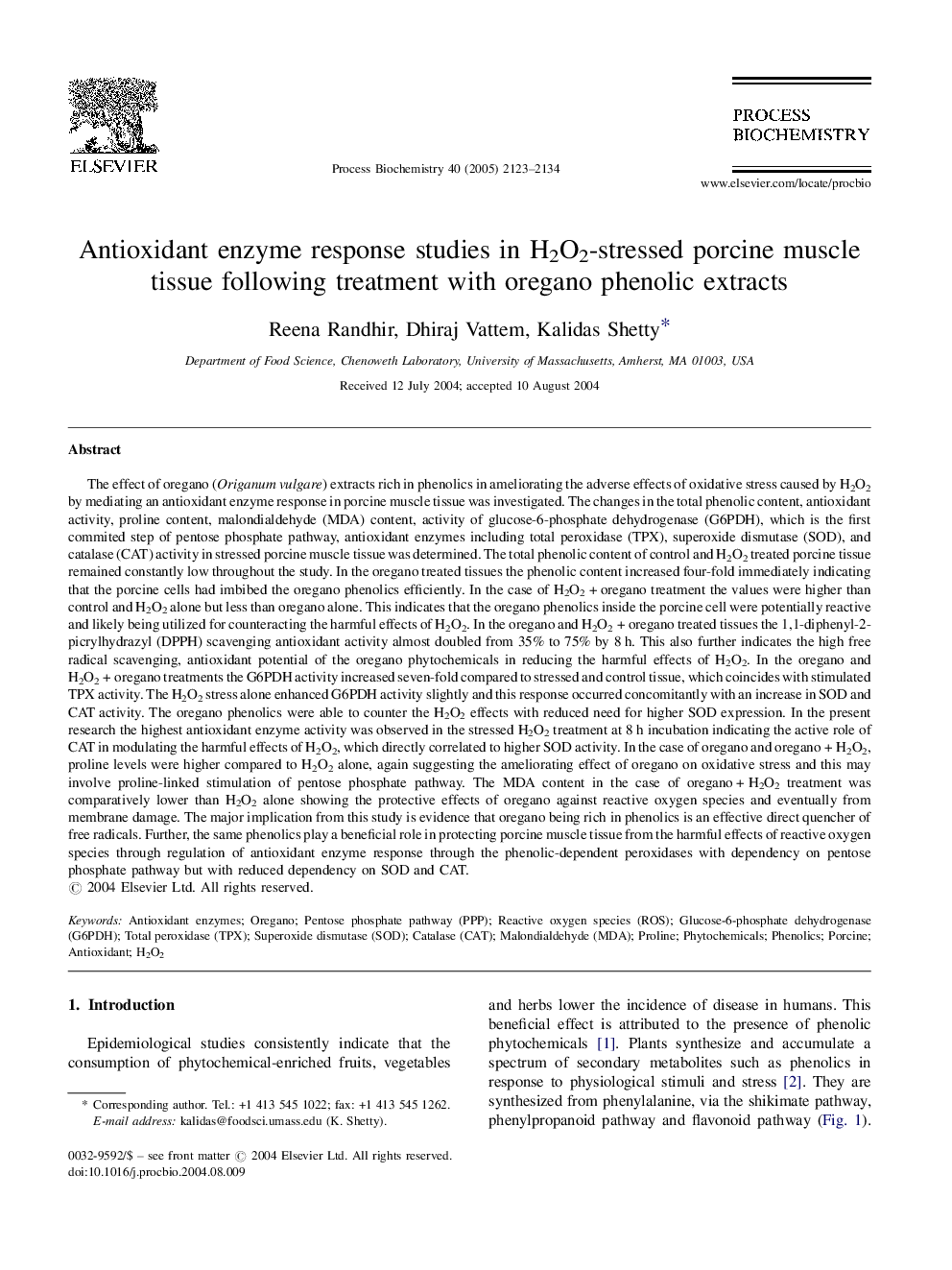| کد مقاله | کد نشریه | سال انتشار | مقاله انگلیسی | نسخه تمام متن |
|---|---|---|---|---|
| 36693 | 45142 | 2005 | 12 صفحه PDF | دانلود رایگان |

The effect of oregano (Origanum vulgare) extracts rich in phenolics in ameliorating the adverse effects of oxidative stress caused by H2O2 by mediating an antioxidant enzyme response in porcine muscle tissue was investigated. The changes in the total phenolic content, antioxidant activity, proline content, malondialdehyde (MDA) content, activity of glucose-6-phosphate dehydrogenase (G6PDH), which is the first commited step of pentose phosphate pathway, antioxidant enzymes including total peroxidase (TPX), superoxide dismutase (SOD), and catalase (CAT) activity in stressed porcine muscle tissue was determined. The total phenolic content of control and H2O2 treated porcine tissue remained constantly low throughout the study. In the oregano treated tissues the phenolic content increased four-fold immediately indicating that the porcine cells had imbibed the oregano phenolics efficiently. In the case of H2O2 + oregano treatment the values were higher than control and H2O2 alone but less than oregano alone. This indicates that the oregano phenolics inside the porcine cell were potentially reactive and likely being utilized for counteracting the harmful effects of H2O2. In the oregano and H2O2 + oregano treated tissues the 1,1-diphenyl-2-picrylhydrazyl (DPPH) scavenging antioxidant activity almost doubled from 35% to 75% by 8 h. This also further indicates the high free radical scavenging, antioxidant potential of the oregano phytochemicals in reducing the harmful effects of H2O2. In the oregano and H2O2 + oregano treatments the G6PDH activity increased seven-fold compared to stressed and control tissue, which coincides with stimulated TPX activity. The H2O2 stress alone enhanced G6PDH activity slightly and this response occurred concomitantly with an increase in SOD and CAT activity. The oregano phenolics were able to counter the H2O2 effects with reduced need for higher SOD expression. In the present research the highest antioxidant enzyme activity was observed in the stressed H2O2 treatment at 8 h incubation indicating the active role of CAT in modulating the harmful effects of H2O2, which directly correlated to higher SOD activity. In the case of oregano and oregano + H2O2, proline levels were higher compared to H2O2 alone, again suggesting the ameliorating effect of oregano on oxidative stress and this may involve proline-linked stimulation of pentose phosphate pathway. The MDA content in the case of oregano + H2O2 treatment was comparatively lower than H2O2 alone showing the protective effects of oregano against reactive oxygen species and eventually from membrane damage. The major implication from this study is evidence that oregano being rich in phenolics is an effective direct quencher of free radicals. Further, the same phenolics play a beneficial role in protecting porcine muscle tissue from the harmful effects of reactive oxygen species through regulation of antioxidant enzyme response through the phenolic-dependent peroxidases with dependency on pentose phosphate pathway but with reduced dependency on SOD and CAT.
Journal: Process Biochemistry - Volume 40, Issue 6, May 2005, Pages 2123–2134